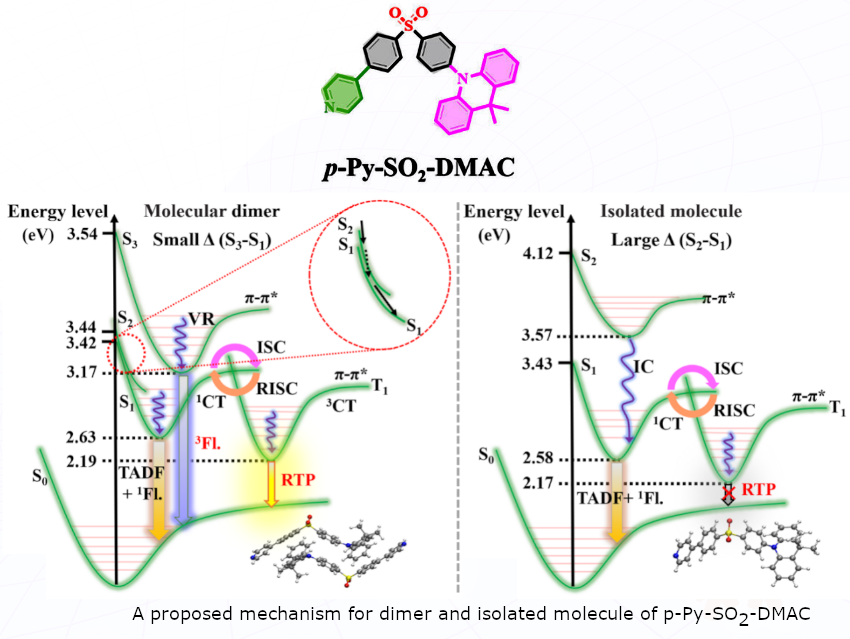Organic luminophores have attracted significant attention due to their versatile responsiveness and promising optoelectronic applications. In particular, the effective use of excitons in organic luminophore systems has inspired investigations into emission pathways from high-energy excited states, driven by anti-Kasha’s rule emissions that hold potential for enhanced exciton utilization. Anti-Kasha’s rule emissions are photoluminescence processes where a molecule emits light from higher excited states (e.g., S₂) instead of the lowest excited state (S₁), defying the typical internal conversion predicted by Kasha’s rule
However, predicting the anti-Kasha effect remains extremely challenging, let alone estimating the luminescent mechanisms of high-energy excited states. Moreover, aggregation-induced anti-Kasha blue-shifted emission has not been previously reported in π-stacked organic materials.
Chuluo Yang, Shenzhen University, China, and colleagues propose a design strategy based on the intermolecular noncovalent interactions to modulate molecular optoelectronic properties and control the distribution of high-energy excited states. They designed and synthesized a new emitter, p-Py-SO₂-DMAC, exhibiting π–π dimer stacking. This emitter simultaneously demonstrates room-temperature phosphorescence (RTP), mechanoluminescence (ML), thermally activated delayed fluorescence (TADF), and aggregation-induced emission (AIE), while also forming five distinct aggregation morphologies with clearly differentiated photoelectric behaviors.
These multiple luminescent mechanisms, rooted in aggregation-induced anti-Kasha emission, have been validated experimentally and theoretically, representing a highly unconventional phenomenon in photophysical systems. Notably, the five aggregate morphologies of p-Py-SO₂-DMAC are interconvertible through heating, recrystallization, sublimation, column chromatography, or grinding.
This work deeply reveals the relationship between the aggregation state and photophysical property, which will facilitate the application of multifunctional luminescent materials in the aggregation state, and meanwhile, it also provides an ideal model to understand highly excited-state emission in fundamental photophysics.
- Aggregation-Induced Anti-Kasha Emission: Unraveling Multimodal Luminescence Mechanisms in a Single Molecule with Five Morphologies
Ling Yu, Yuzhang Liu, Dakai Zhou, Zhigang Ni, Shijun Li, Chuluo Yang
Aggregate 2025
https://doi.org/10.1002/agt2.70075


